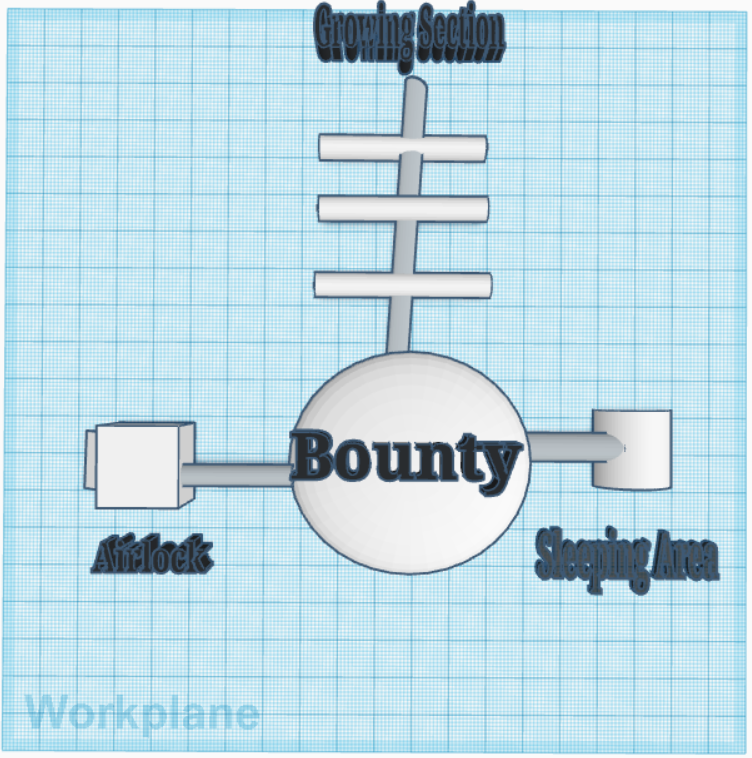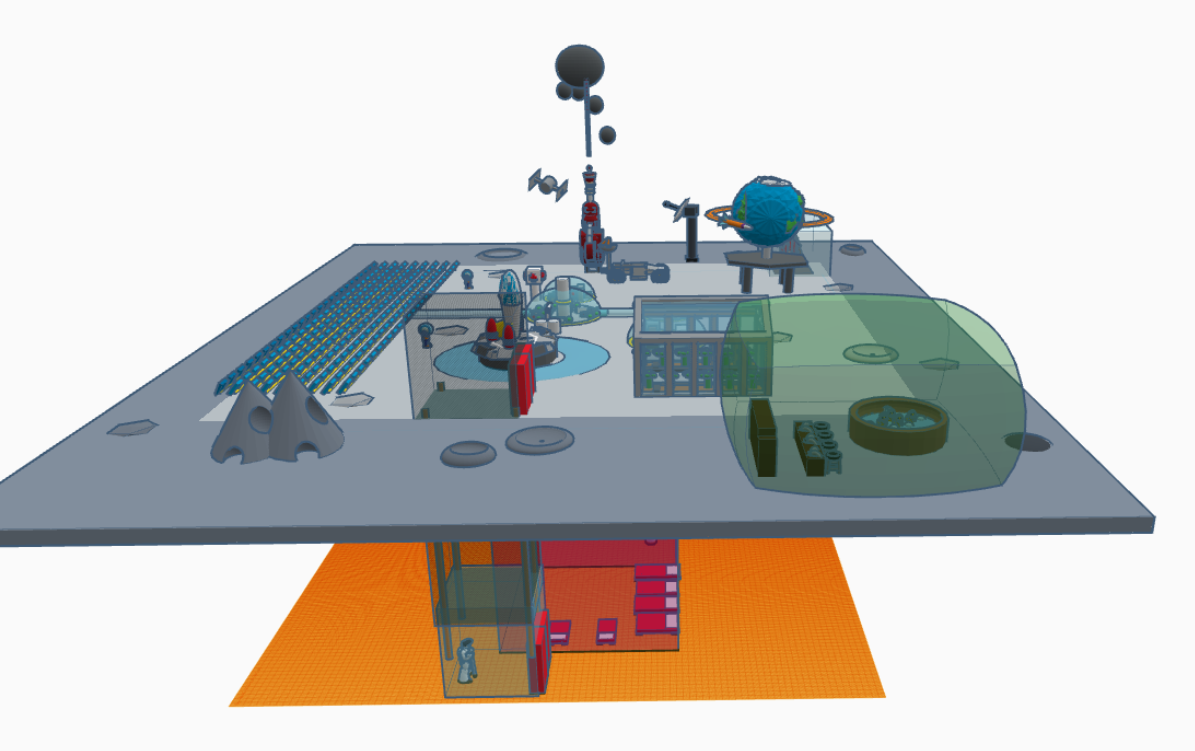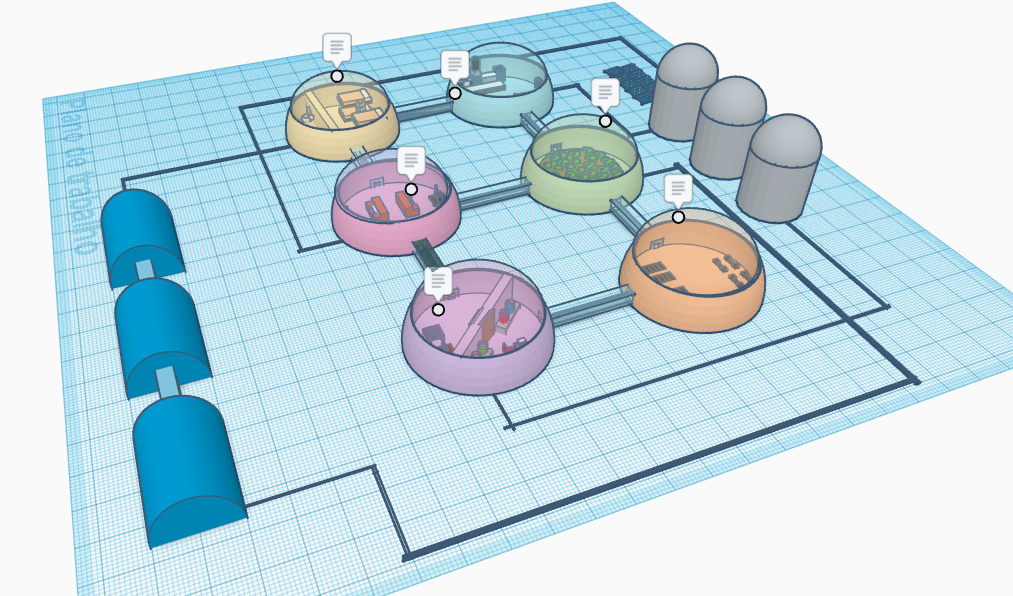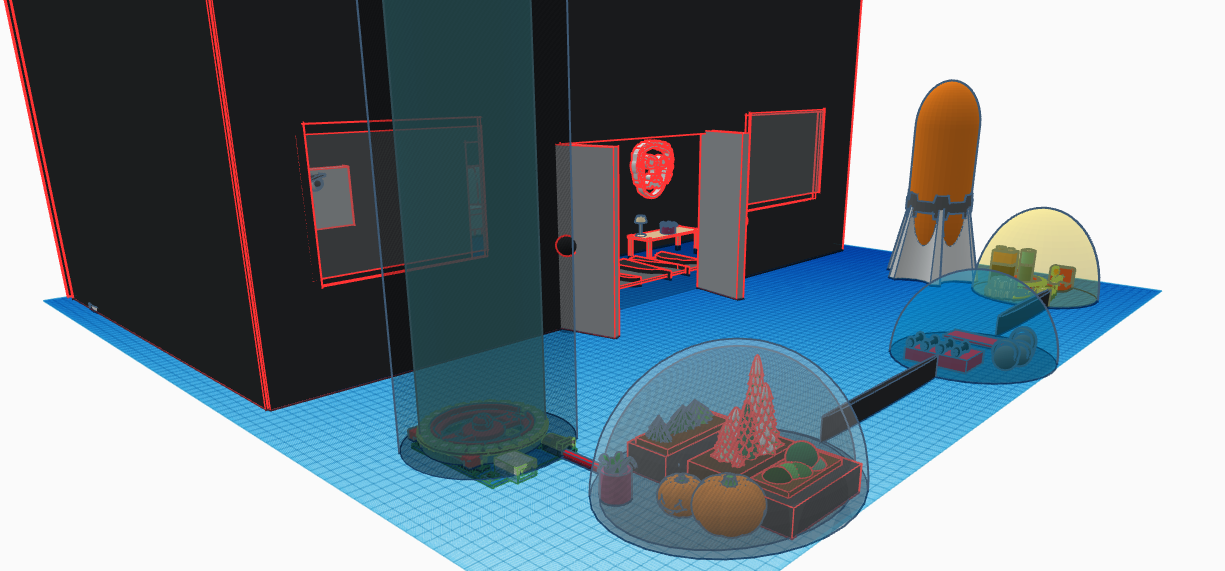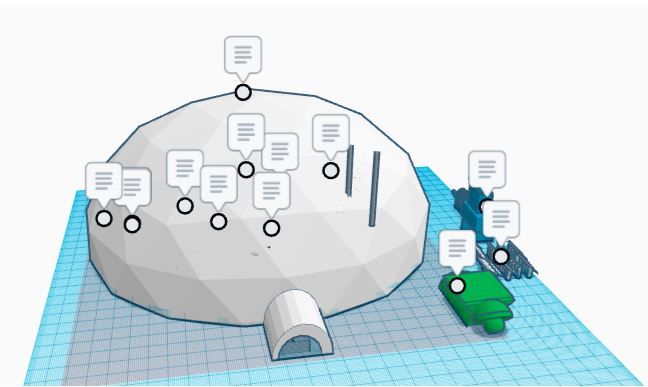Moon Camp Explorers Gallery 2021-2022
In Moon Camp Explorers each team’s mission is to 3D design a complete Moon Camp using Tinkercad. They also have to explain how they will use local resources, protect astronauts from the dangerous of space and describe the living and working facilities.
Team: Base 3
King Alfred’s Academy Wanatge United Kingdom 12 6 / 0
External link for 3d
|
Project description
Our project is based in the South Pole, Northern Rim of the Peary crater. The moon may not have as many supplies as Earth, but we can still use what we have. You can plant things in the Lunar soil, such as cress, rocket, tomatoes, radish, rye, quinoa, spinach, chives, peas and leeks. Lunar soil is found on the moon which is a good supply of water and could be used for plants and compost. In the International Space Station, they use electrolysis for the generation and supply of Oxygen, as humans need 800 grams of Oxygen a day to survive. Even though this is used by experienced professionals, it is a very dangerous, strong and risky source of power to be used as it can be quite unstable. We can grow and pick plants such as algae to produce Oxygen, as well as Lunar soil as it contains Oxygen but it is hard to extract because it is on the Moon which has a cold atmosphere meaning it would have to be heated up quite thoroughly and to a very high temperature. |
||||
|
Where do you want to build your Moon Camp?
Close to the lunar poles Why did you choose this location?
We have chosen this location due to the presence of surface and subsurface ice around the lunar poles which can be used as a water source, the areas locally of permanent light from the sun allowing for a constant energy source, as well as, areas of permanent darkness which will be cooler for the moon camp location when considering the extreme temperatures of the moon. How do you plan to build your Mooncamp? Which materials will you use?
We plan to build our moon camp out of honeycomb fibreglass. This building material is strong, durable and has a good strength to weight ratio. We would transport the materials to make an inital base by rocket from Earth and then use 3D printers to continue the construction further. |
||||
|
Water
|
Food
|
Electricity
|
Air
|
Protection
|
|
On the moon humans need about 2 litres a day which we can get it out of lunar soil but it is so cold they we would have to make new tools to break it to then heat it up for water so it melts. |
You can plant things in the lunar soil such as cress, rocket, tomatoes, radish, rye, quinoa, spinach, chives, peas and leeks but we will also need to take soil from earth so we can grow more things other than just those. The sun shines doesn’t shine for long enough for things to survive so we will need to use artificial light. Use human waste for compost. |
We would use solar panels in the permanent sunlight on the lunar pole to generate the majority of the energy needed. We would also ensure energy is not wasted by capturing the energy lost through friction from lunar vehicle tyres. |
Humans need 800 grams of oxygen per day, in the International Space Station they use electrolysis. We can use plants such as algae to get oxygen. |
We shall use honeycomb fibreglass as it is a strong, durable and stable material which will deflect meteors quite efficiently. |
|
Describe a day on the Moon for one of your Moon Camp astronauts
A Day on the moon 6:00- Wake up, break (30minutes) 6:30- Morning exercise including: sit ups, press ups and star jumps (30minutes) 7:00- Breakfast, (20minutes) 7:20- Exercise (40minutes) 8:00- Toilet Break (15minutes) 8:15- Maintenance, check if the station is up to standards and 0 mishaps (45minutes) 9:00- Water plants and harvest any that are ready. (1hour) 10:00- Exercise (1hour) 11:00- Toilet Break (15minutes) 11:15- Early Lunch (30minutes) 11:45- Test Oxygen levels, researching about abnormal finds (45minutes) 12:30- Exercise (1hour) 13:30- Small snack to keep you going (10minutes) 13:40- Maintenance, check if there are any problems or casualties (1hour and 20minutes) 15:00- Break- (1hour) 16:00- Exercise (1hour) 17:00- Test rock samples, geology (1hour) 18:00- Toilet Break (15minutes) 18:00- Dinner (1hour 30minutes) 19:30- Check up, medically (1hour 30minutes) 21:00- Get ready for bed, break (1hour) 22:00- Sleeping (8hours) Reset… |
||||


